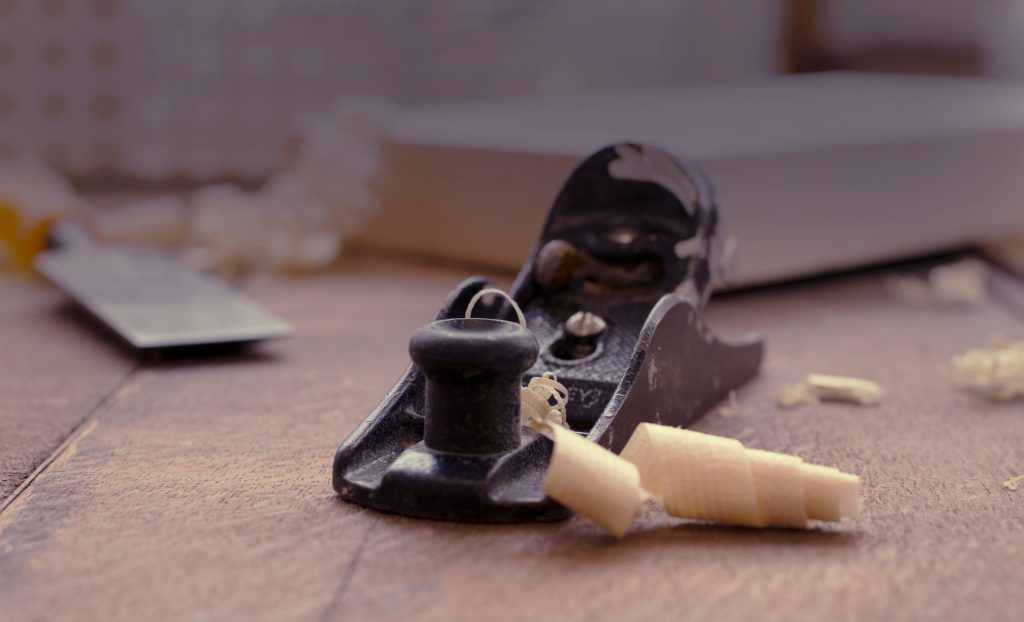
It’s soup-making day in Karen’s kindergarten class, and every child holds a small paring knife, carefully chopping carrots, potatoes, and leeks brought from home. They work quietly, with intention and anticipation, knowing they will be rewarded with a delicious snack they made themselves. Learning how to handle a kitchen knife is the first lesson in our Practical Arts education, which will progress side by side with academics, music, foreign language, and athletics.
 In fifth grade, all students begin formal classes in woodworking. “A student may never use a spokeshave, drawknife or hand plane again once they leave the woodworking program, but for the rest of their life they will use a knife,” explains woodworking teacher Robert Palmer. “Students make their own knives, perfectly fitted to their hands, as their first woodworking tool. They will use them to carve other projects throughout their grade school years.” To teach the fifth-grade students to assemble a knife from scratch, Mr. Palmer gave them a Morakniv blade and taught them how to use a rasp and file to shape a handle that fits their own hand. They learned how to drive the tang of the knife through the handle. And finally, they placed a penny at the end and completed the knife by pounding the metal using a ball-peen hammer. The students will go on to carve a butter spreader from green birch wood, using their newly minted knife.
In fifth grade, all students begin formal classes in woodworking. “A student may never use a spokeshave, drawknife or hand plane again once they leave the woodworking program, but for the rest of their life they will use a knife,” explains woodworking teacher Robert Palmer. “Students make their own knives, perfectly fitted to their hands, as their first woodworking tool. They will use them to carve other projects throughout their grade school years.” To teach the fifth-grade students to assemble a knife from scratch, Mr. Palmer gave them a Morakniv blade and taught them how to use a rasp and file to shape a handle that fits their own hand. They learned how to drive the tang of the knife through the handle. And finally, they placed a penny at the end and completed the knife by pounding the metal using a ball-peen hammer. The students will go on to carve a butter spreader from green birch wood, using their newly minted knife.
It is no small feat to take a two-dimensional pencil sketch on the surface of a block of wood and work the piece into a three-dimensional object. Students are given direction and guidance along the way, but the skills are only obtained and mastered by actually doing them. Each success, or wrong turn, of the chisel, is a lesson in patience, resilience, and flexibility, qualities that support the development of problem-solving techniques and subtle thinking as well.
“I think it’s really incredible that my daughter made her own knife,” said parent Julie Wahlin, who looks forward to watching her daughter’s skill and creativity evolve in the coming years. The sixth graders will use their new knives to carve a spoon out of a block of local cherry or maple. In seventh grade, they will explore more complex forms by making a Kuska (a Norwegian drinking vessel). In eighth grade, they will learn joinery and build beautiful three-legged stools. And by the eleventh grade, students will tackle a project of greater scope and scale, making the Stickley No. 74 Book Rack. This book rack uses wedged-through mortise and tenon joinery and introduces students to the historical significance of The Arts and Crafts movement.
Students at Lake Champlain Waldorf School, like Waldorf students throughout the world, learn experientially. Going deeply into the material, solving complex problems, and creating something tangible, useful, and beautiful, are part of everyday learning. What comes from woodworking, or learning a string instrument, or hiking in the White Mountains, is a deep satisfaction along with concentration, room to learn from errors, and eventual mastery. Sparking curiosity and discovery leads to a lifelong love of learning.
If you want to learn more about our school, come to an upcoming event!

